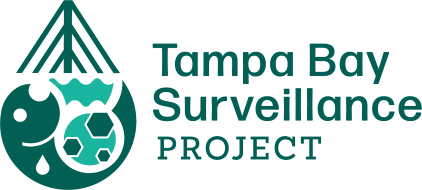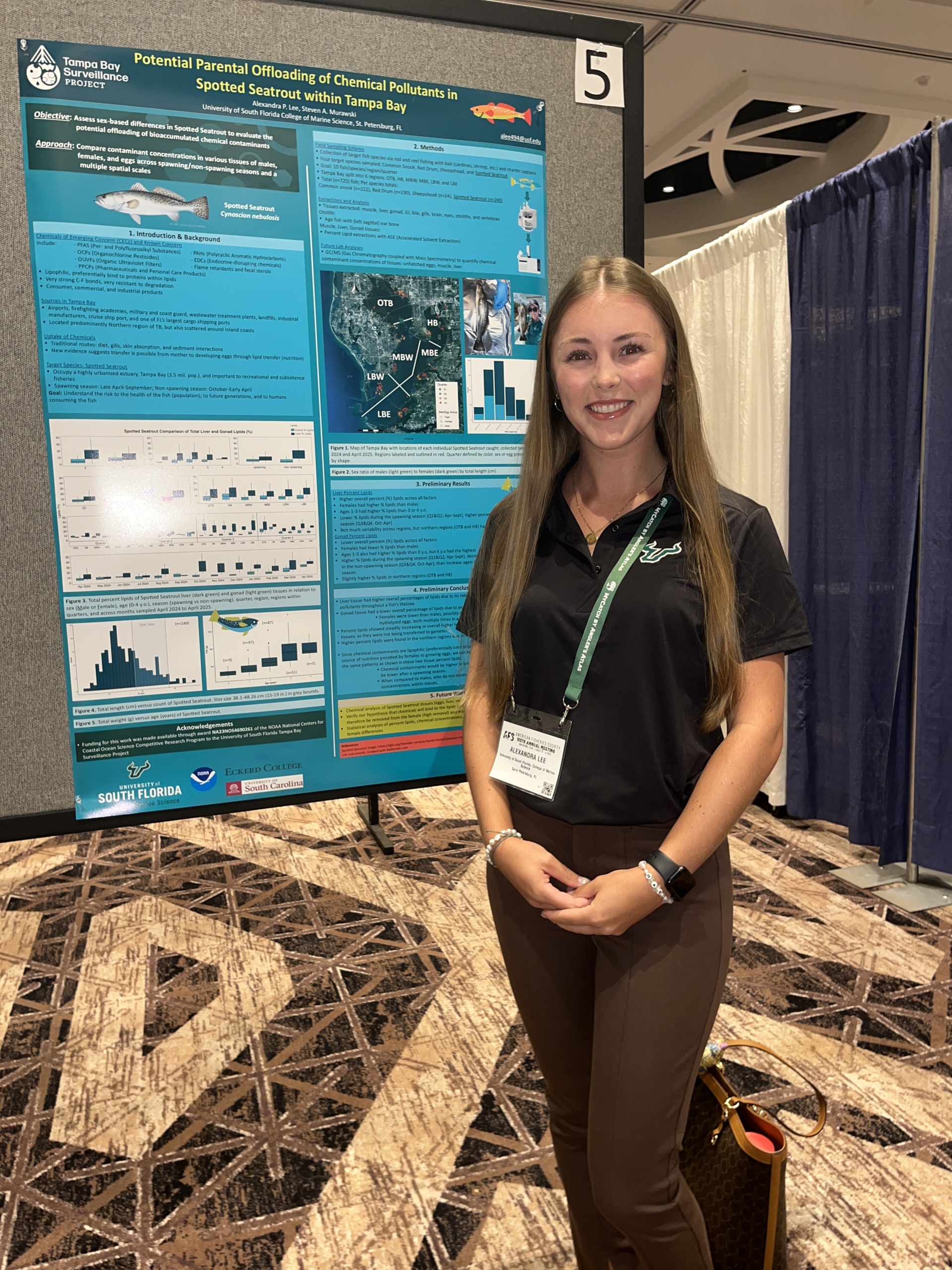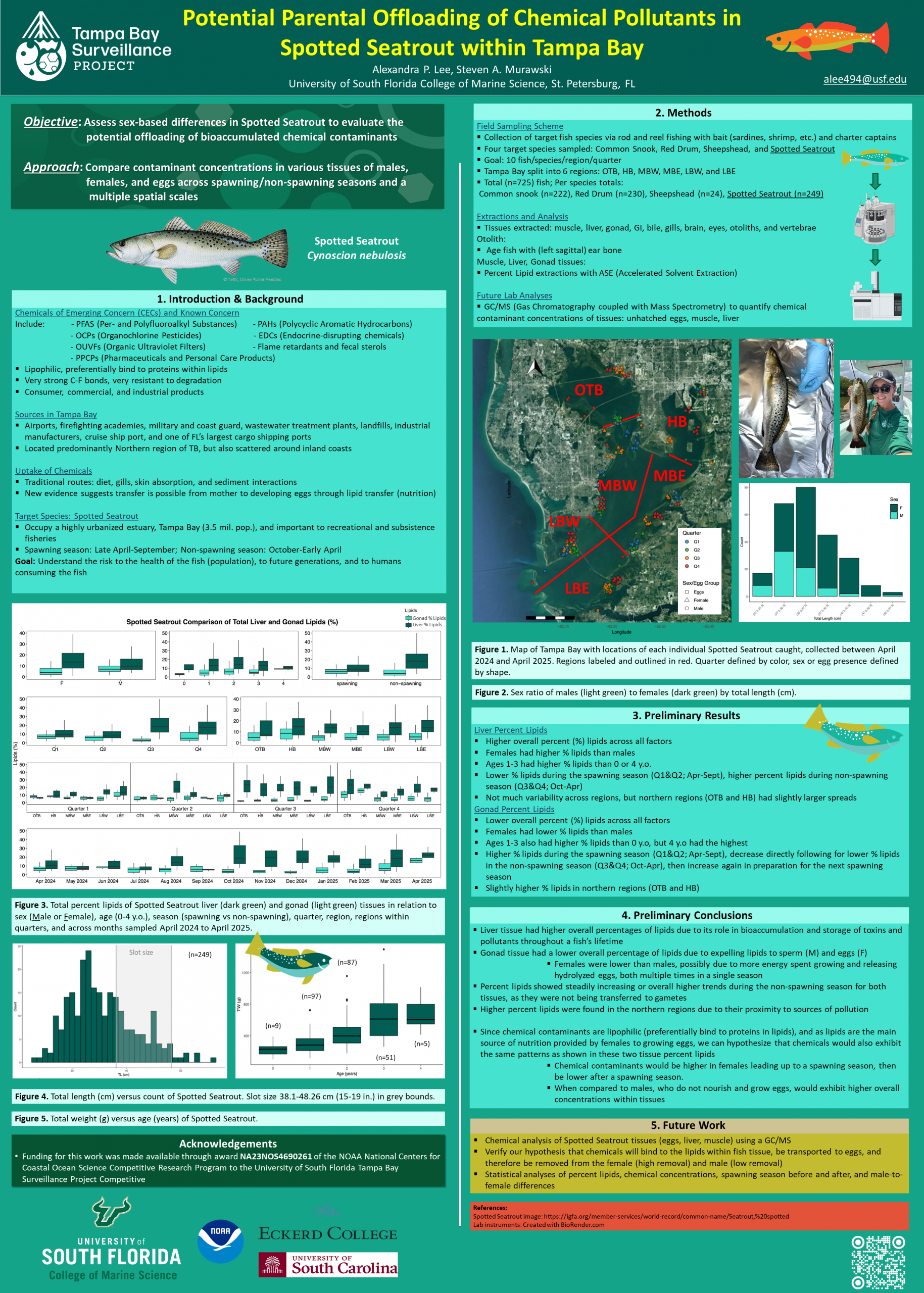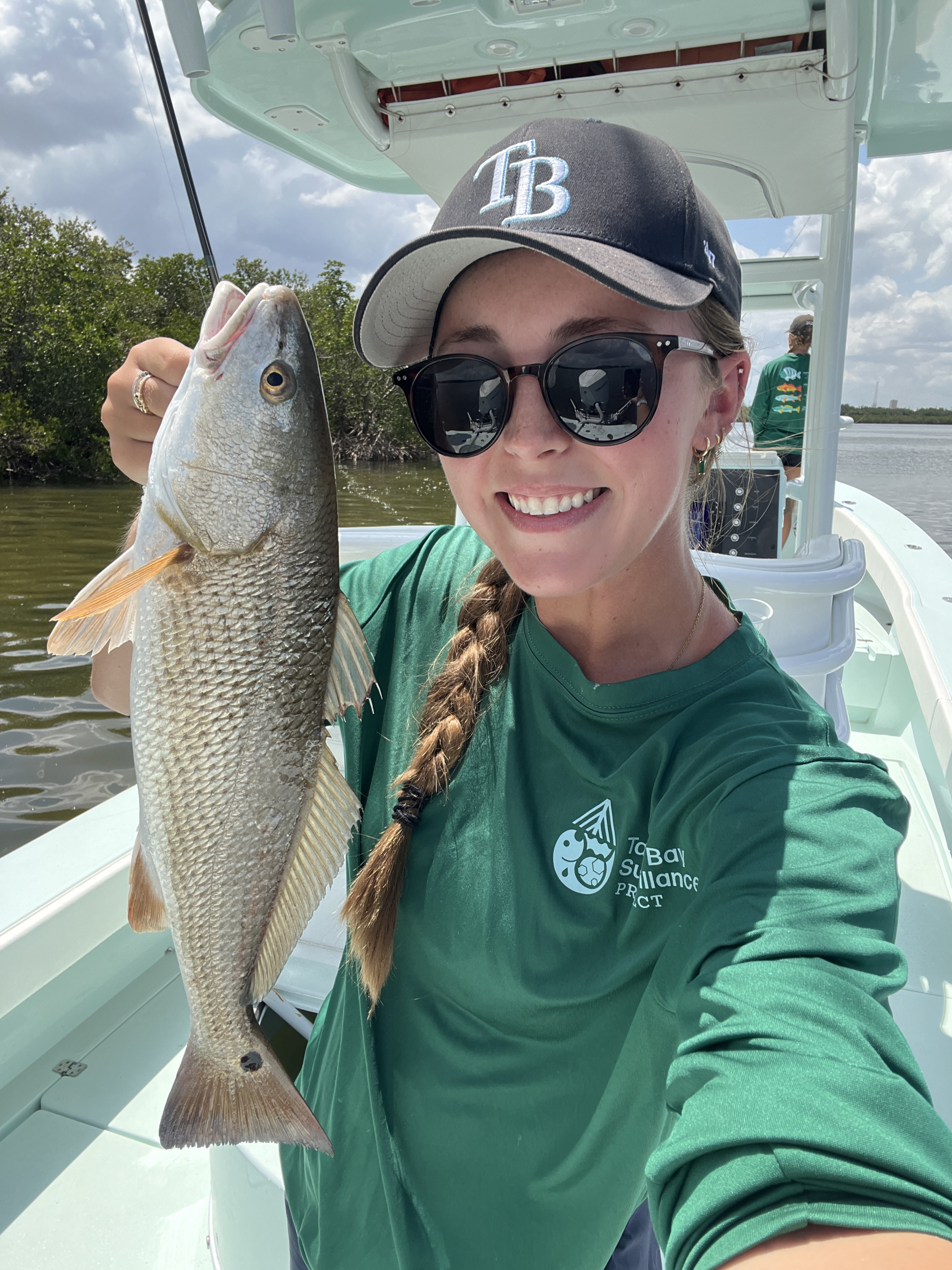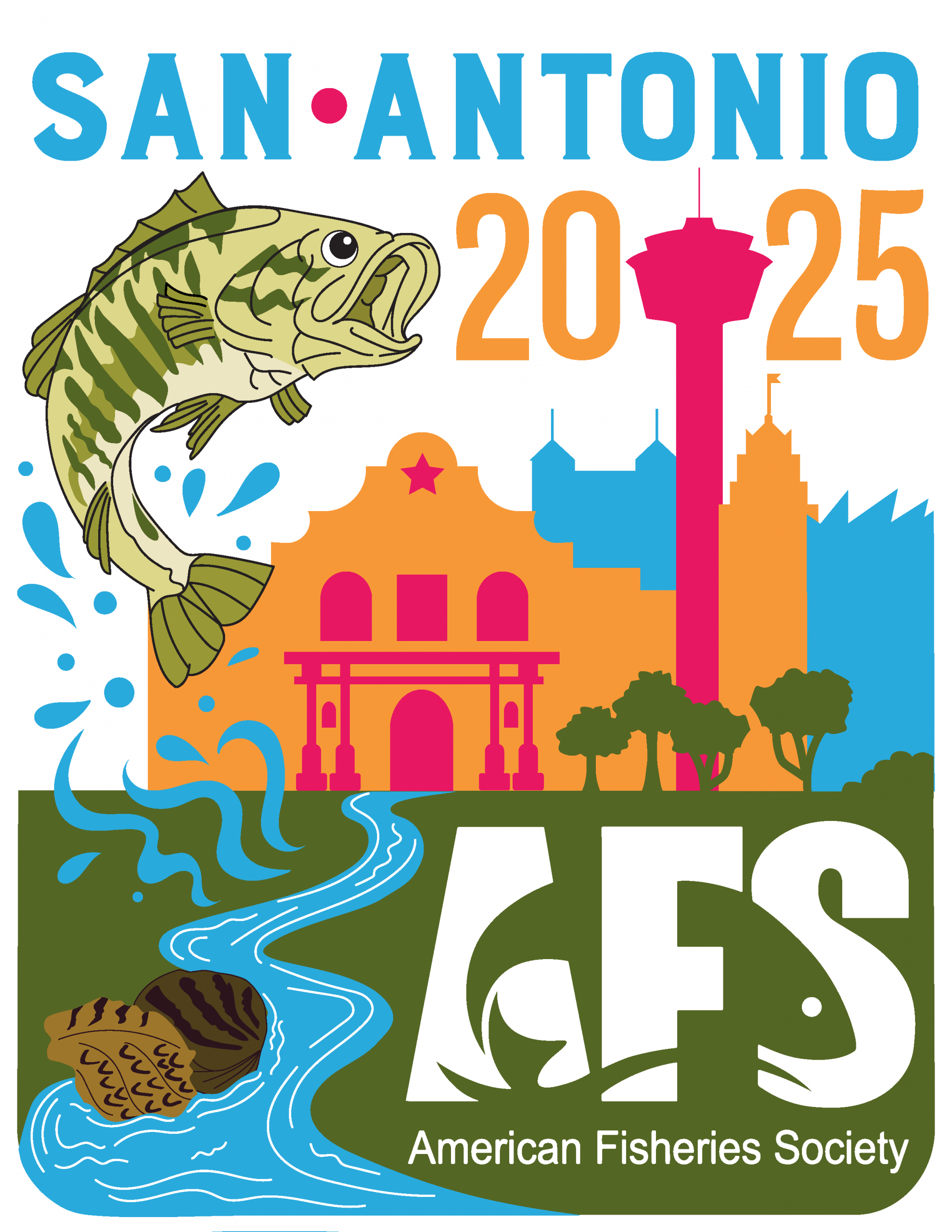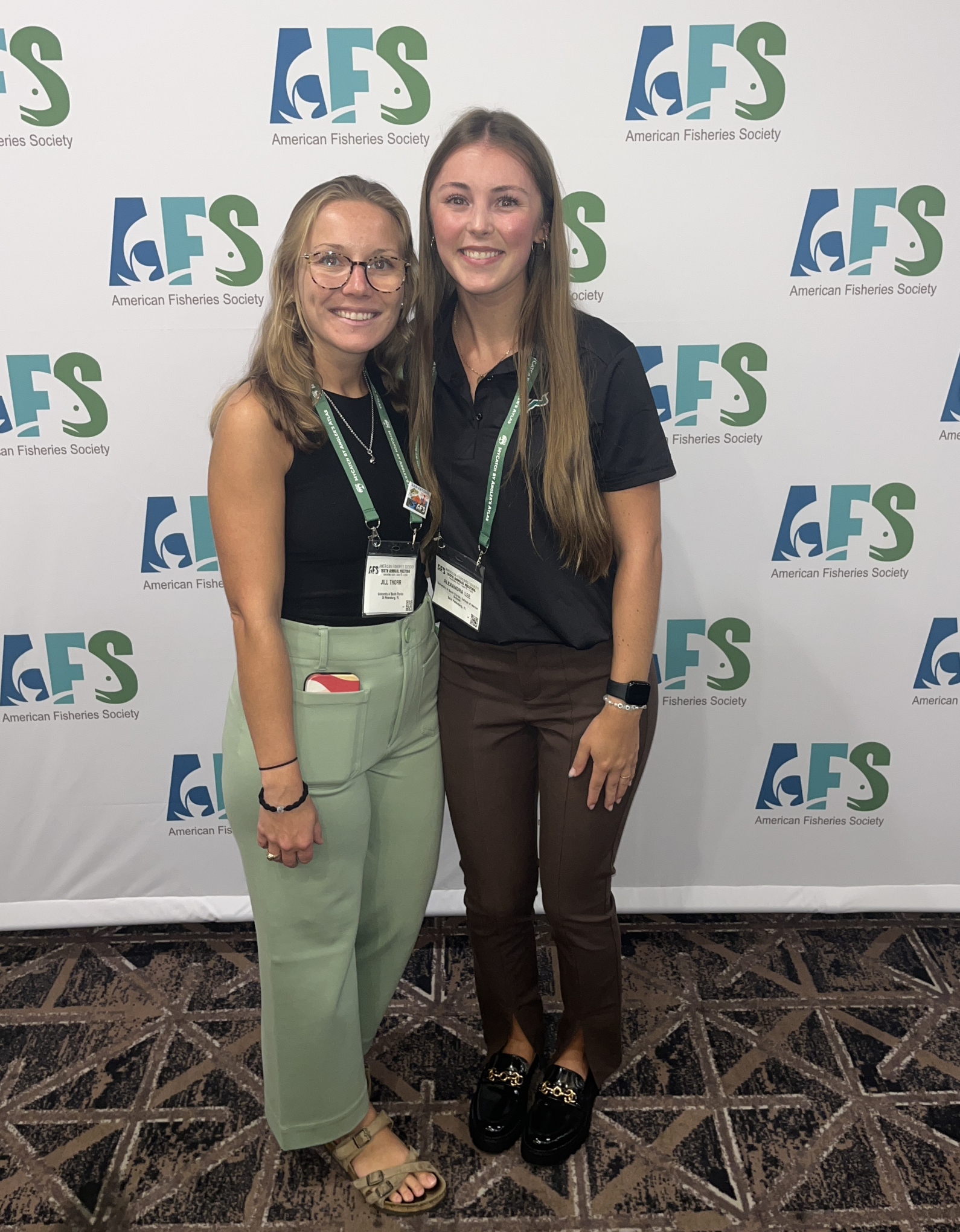In August, master’s student Alexandra Lee had the incredible opportunity to attend this year’s American Fisheries Society (AFS) Annual Meeting in San Antonio, TX. Located on the San Antonio Riverwalk, this was an excellent place to learn not only about fascinating emerging research, but the rich history of San Antonio, which is home to The Alamo, the iconic umbrellas of Casa Rio, and Tower of the Americas which was built for the 1968 World’s Fair.
Alexandra presented a poster on her current master’s thesis work, “Potential Parental Offloading of Chemical Pollutants in Spotted Seatrout within Tampa Bay, FL,” which won the award for best student poster in the Water Quality Section (WQS), also earning Alexandra an invitation to be a member of AFS’s WQS sub-group. In the poster, Alexandra presented evidence for initial correlations between lipids and pollutants within fish tissues.
Why would there be a correlation? Because the pollutants we are investigating have chemical properties that allow for binding to lipids (lipophilic = lipid loving).
- There are two main types of chemical pollutants we are investigating: Contaminants of Emerging and Known Concern (CECs and CKCs, respectively), which can include: PFAS (forever chemicals), pesticides, flame retardants, endocrine disrupters, UV filters, and pharmaceuticals.
Why are we interested in lipids? Lipids are the main source of nutrition, growth, and energy provided by the mother to developing eggs. So, if chemical contaminants are binding to lipids, and lipids are being used in egg growth and development, there is reason to believe when these eggs are released, they will have a starting contaminant level rather than a “clean slate.”
The relationship between lipids and pollutants has larger implications when we think of the health of future generations of fish (and other wildlife) and pollutant levels that affect their health, especially if this was the only method of transfer and exposure. Fish, and other organisms, are also impacted by bioaccumulation (pollutant accumulation increase over time) and biomagnification (pollutant accumulation increase by moving up the food chain). Fish cannot metabolize any or all the large influx of pollutants they experience, so they are distributed to various tissues (muscle, liver, brain, gills, etc.). Potentially, a percentage is released through the eggs via binding to lipids of nutrients.
Thank you to AFS and San Antonio for hosting such a great conference! The TBS team look forward to sharing more results from our ongoing research.
